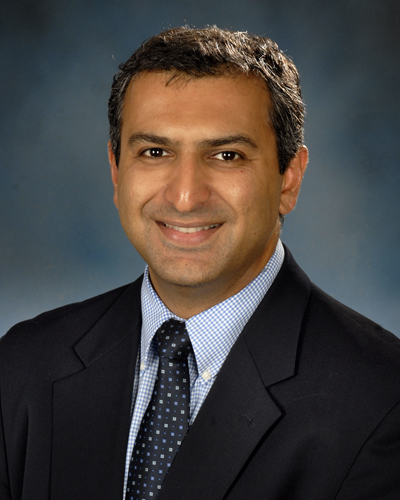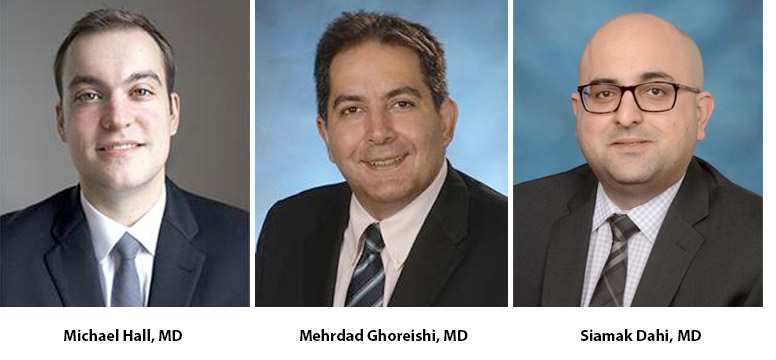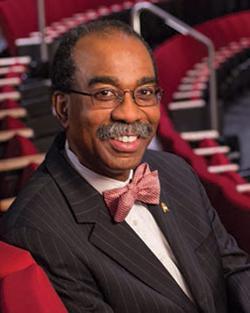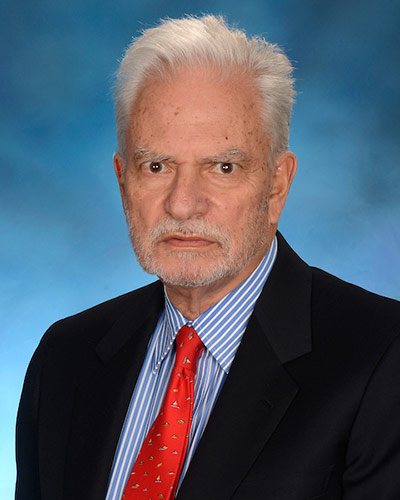May 13, 2021 | Bill Seiler

Investigational Device Targets Challenging Aortic Surgery
Researchers at the University of Maryland School of Medicine (UMSOM) launched the first-in-Maryland clinical trial of an experimental device to repair a balloon-like bulge in the aorta, the body’s main artery that extends from the heart through the chest into the abdomen. The UMSOM researchers are also surgeons with the University of Maryland Heart and Vascular Center at the University of Maryland Medical Center (UMMC). Surgeons implanted the device to repair the artery in the first patient at UMMC in February.
Aneurysms can develop slowly over time and are typically monitored for years until there is a high risk for rupture. The experimental device is designed to treat thoracoabdominal and pararenal aortic aneurysms. These types of aneurysms affect 12,000 to 15,000 patients a year in the United States, and they are complicated to repair. Patients may need an open surgery with extended recuperation time or a customized device that takes weeks to make.
This pivotal trial will test the safety and efficacy of a device that offers an off-the-shelf option for repair of these complex aneurysms. It is an endovascular – or “inside the blood vessel” – treatment that uses a series of interconnected stents with branched arms like an octopus to prop open and repair the weakened artery walls. These aneurysms often also affect various aortic branches that provide blood flow to the kidneys, liver, spleen and stomach.
“The aorta is a high-pressure pipe with very aggressive flow. Any intervention in that environment requires special instruments and special skills,” said Shahab Toursavadkohi, MD, associate professor of surgery at UMSOM and co-director of the University of Maryland Center for Aortic Disease. He is the principal investigator of the Maryland arm of the national, multicenter trial. The trial is sponsored by W.L Gore & Associates, and is called Evaluation of the GORE® EXCLUDER® Thoracoabdominal Branch Endoprosthesis in the Treatment of Thoracoabdominal and Pararenal Aortic Aneurysms (TAMBE).
Existing endovascular repair systems usually require weeks to make a customized device to fit the patient's individual anatomy. TAMBE, a modular system that conforms to a patient's aortic vessels, takes a different approach, according to Dr. Toursavadkohi. "The TAMBE is a minimally invasive, off-the-shelf modular system of small stents that go in piece by piece to conform to the patient's aortic anatomy, all inserted through a small opening in the groin."
That small opening requires preparation and planning to ensure all the stents or grafts will fit together when assembled inside the aorta, all while the heart continues to pump blood. 3-D imaging, 3-D printing and extensive measurements prior to the surgery come together to make sure each piece is precisely sized and angled for the next one to fit. "You are essentially opening a graft that literally looks like an octopus, four 'legs' instead of eight, and each 'leg' goes to one major artery to provide blood flow to the main organs," said Dr. Toursavadkohi.
 He said the team, including another vascular surgeon (Michael Hall, MD, clinical assistant professor, UMSOM), and two cardiac surgeons (Mehrdad Ghoreishi, MD, assistant professor of surgery, UMSOM, and Siamak Dahi, MD, UMSOM visiting instructor and cardiac surgery fellow), placed upwards of 20 stents in the first patient. They have since used TAMBE for other patients as part of the study.
He said the team, including another vascular surgeon (Michael Hall, MD, clinical assistant professor, UMSOM), and two cardiac surgeons (Mehrdad Ghoreishi, MD, assistant professor of surgery, UMSOM, and Siamak Dahi, MD, UMSOM visiting instructor and cardiac surgery fellow), placed upwards of 20 stents in the first patient. They have since used TAMBE for other patients as part of the study.
The multicenter study will enroll 102 patients who will be followed for five years. The research will measure the percentage of uncomplicated technical success with the procedure as well as the percentage of participants who do not require significant additional treatment for five years.

For more information about this study, see Clinical Trial (NCT03728985).
About the University of Maryland School of Medicine
Now in its third century, the University of Maryland School of Medicine was chartered in 1807 as the first public medical school in the United States. It continues today as one of the fastest growing, top-tier biomedical research enterprises in the world -- with 46 academic departments, centers, institutes, and programs, and a faculty of more than 3,000 physicians, scientists, and allied health professionals, including members of the National Academy of Medicine and the National Academy of Sciences, and a distinguished two-time winner of the Albert E. Lasker Award in Medical Research. With an operating budget of more than $1.2 billion, the School of Medicine works closely in partnership with the University of Maryland Medical Center and Medical System to provide research-intensive, academic and clinically based care for nearly 2 million patients each year. The School of Medicine has nearly $600 million in extramural funding, with most of its academic departments highly ranked among all medical schools in the nation in research funding. As one of the seven professional schools that make up the University of Maryland, Baltimore campus, the School of Medicine has a total population of nearly 9,000 faculty and staff, including 2,500 students, trainees, residents, and fellows. The combined School of Medicine and Medical System (“University of Maryland Medicine”) has an annual budget of over $6 billion and an economic impact of nearly $20 billion on the state and local community. The School of Medicine, which ranks as the 8th highest among public medical schools in research productivity (according to the Association of American Medical Colleges profile) is an innovator in translational medicine, with 606 active patents and 52 start-up companies. In the latest U.S. News & World Report ranking of the Best Medical Schools, published in 2021, the UM School of Medicine is ranked #9 among the 92 public medical schools in the U.S., and in the top 15 percent (#27) of all 192 public and private U.S. medical schools. The School of Medicine works locally, nationally, and globally, with research and treatment facilities in 36 countries around the world. Visit medschool.umaryland.edu
About the University of Maryland Medical Center
The University of Maryland Medical Center (UMMC) is comprised of two hospital campuses in Baltimore: the 800-bed flagship institution of the 13-hospital University of Maryland Medical System (UMMS) — and the 200-bed UMMC Midtown Campus, both academic medical centers training physicians and health professionals and pursuing research and innovation to improve health. UMMC's downtown campus is a national and regional referral center for trauma, cancer care, neurosciences, advanced cardiovascular care, women's and children's health, and has one of the largest solid organ transplant programs in the country. All physicians on staff at the downtown campus are clinical faculty physicians of the University of Maryland School of Medicine. The UMMC Midtown Campus medical staff is predominately faculty physicians specializing in diabetes, chronic diseases, behavioral health, long term acute care and an array of outpatient primary care and specialty services. UMMC Midtown has been a teaching hospital for 140 years and is located one mile away from the downtown campus. For more information, visit www.umm.edu.
Read the full story at: https://www.umms.org/ummc/news/2021/thoracoabdominal-aortic-aneurysms-maryland-trial
Contact
Bill Seiler
University of Maryland Medical Center
bseiler@umm.edu
410-328-8919
Related stories

Wednesday, November 13, 2019
UM School of Medicine Establishes Endowed Professorship in Neurosurgery Through Private Gifts and Matching State Funds
University of Maryland School of Medicine (UMSOM) Dean E. Albert Reece, MD, PhD, MBA, announced today that the UMSOM has been awarded matching funds from the Maryland E-Nnovation Initiative Fund (MEIF), administered by the Maryland Department of Commerce. The funds, when combined with private philanthropy, will enable UMSOM to establish the Howard M. Eisenberg, MD, Distinguished Professorship in Neurosurgery.

Tuesday, March 01, 2016
UM SOM Appoints Prominent Physician Scientist Dr. Robert W. Buchanan as New Director of the Maryland Psychiatric Research Center
University of Maryland School of Medicine (UM SOM) Dean E. Albert Reece, MD, PhD, MBA, along with Bankole Johnson, DSc, MD, MB, ChB, MPhil, Chairman of the UM SOM Department of Psychiatry, announced today that Robert W. Buchanan, MD, has been appointed Director of the Maryland Psychiatric Research Center (MPRC).
